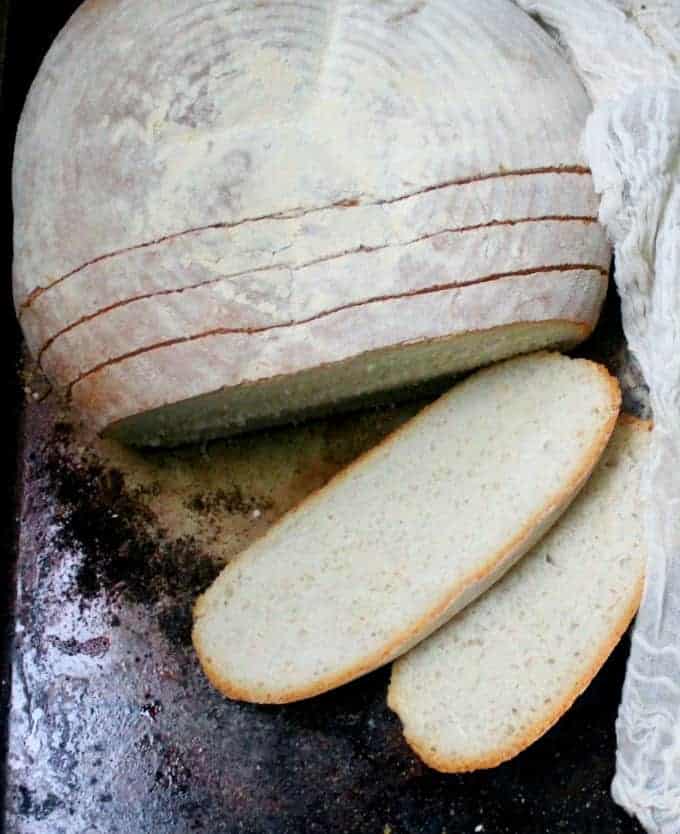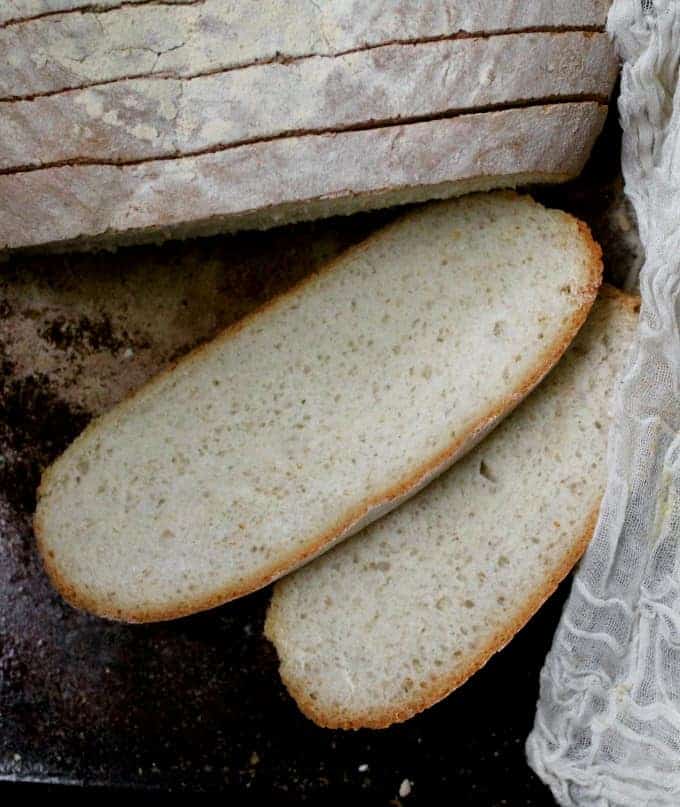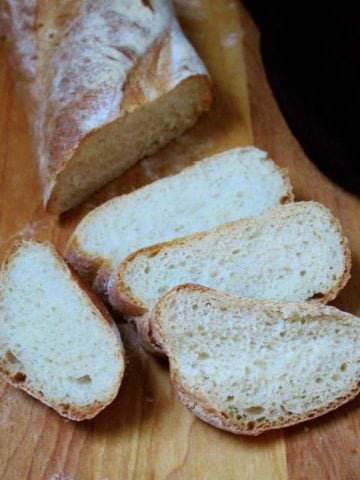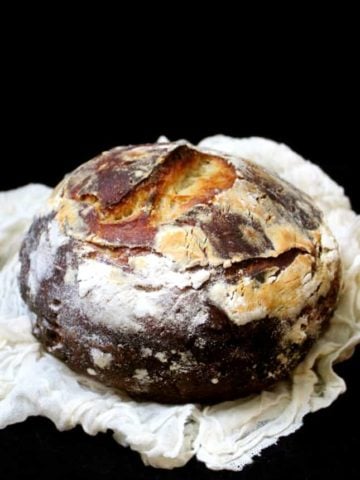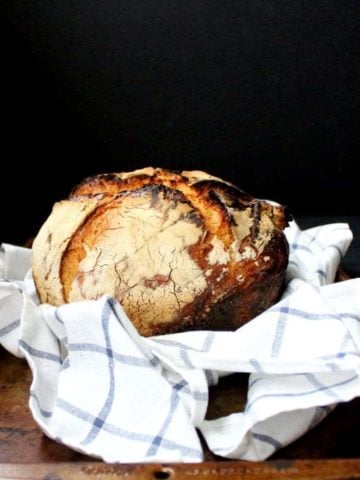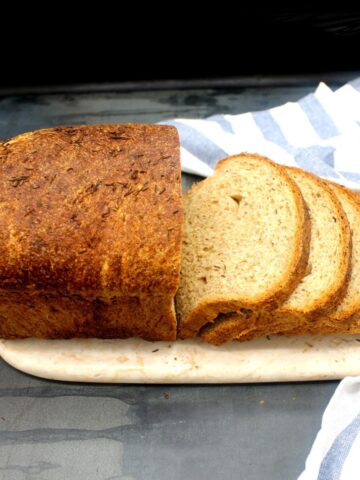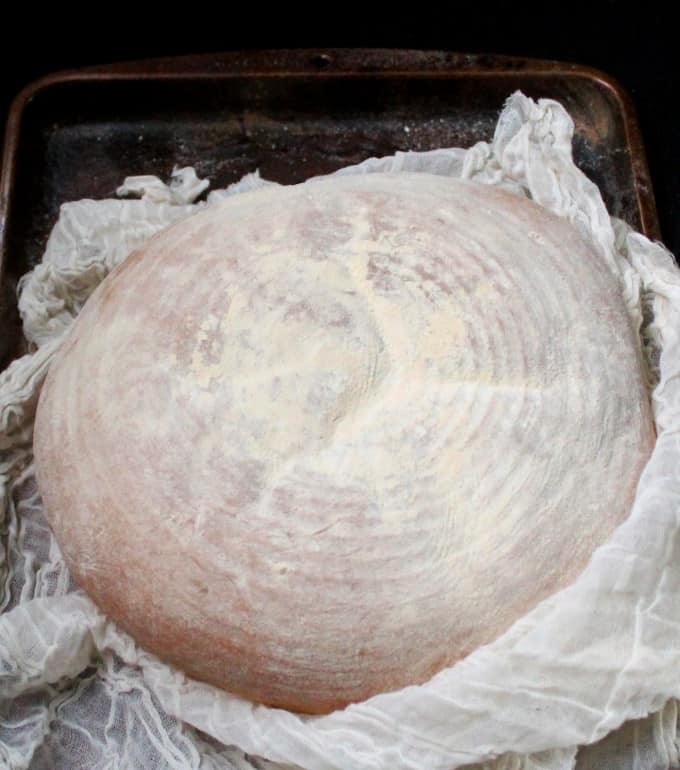You might also like these recipes for Italian bread, ciabatta and sourdough focaccia. Of all the breads I make, this classic bread from Tuscany, called Pane Toscano, is one of my favorites. It’s probably the bread I make most frequently in my kitchen, even more than sourdough bread, and the reasons are obvious: a crisp but not heavy crust and a soft, pillowy crumb, which makes it perfect for dunking it into soups or sauces. It is also the perfect bread to make bruschetta or smear with some vegan pesto, if you have a mind to. What makes the process of making this bread a little different is that it starts out with a biga, a starter that’s kinda like a sourdough starter on speed. The biga is made with flour, water and yeast, and you start it the previous night, let it stand and ferment a bit overnight, and then make a dough with it the next morning. So if you’ve been wanting to make a sourdough starter and have been sitting on the fence about it, this is a good one to begin with. But to be clear, a biga is not a sourdough starter: it has lots of flavor, but not the deep, rich flavor of sourdough, developed over days and months and years. It has added yeast, unlike sourdough which uses natural yeast seduced from the atmosphere. Also a dough made with biga will rise much faster than a dough made with sourdough starter alone. Because the biga needs eight hours to develop, I’d advise starting on this bread the evening before if you plan to have it for lunch the next day, or rather early in the morning if you want it in time for dinner. Check to get new recipe updates by email.
Tips
Give it time. This is not a bread to make in a rush because you want all of that wonderful flavor. So remember to make your biga or starter the night before, and give it time to bubble up and ferment in a warm place. A Tuscan bread is saltless – all the better to scoop up flavorful sauces and soups with, or use for bruschetta. If you absolutely want salt in here, add a teaspoon or two, depending on your taste, when you knead the dough. You can make this dough with all purpose flour, as I did this time, or you can add in a cup of whole wheat flour for a little more complexity and flavor. When I use whole wheat flour, I add it the night before, to the biga. Your dough should be smooth and soft, not firm, but it should not be sticky. So when you’re kneading it, if it starts sticking to the bowl or your hands, make sure you add some flour, but not too much. This is a freeform bread, and I usually shape it up into a boule and let it rise on a baking sheet. The resulting loaf is huge, so if you want to separate it into two loaves, that would work too. Or shape it into a long loaf, like a batard. I recently got a banneton basket and wanted to see how this bread would rise in it, so I used it when I last made this bread. It shaped up quite nicely, rings and all. That said, I made one mistake when I proofed the bread in the banneton. I didn’t feel like spoiling that beautiful design by scoring the bread, which I usually do. Not a good idea, because the gases in the fermented biga need to escape and as a result my banneton loaf ended up cracking at the base. It still looked beautiful, though, and came out quite perfect taste- and texture-wise. Even so, a reminder to score that bread!
More vegan bread recipes
Recipe card
